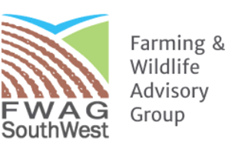
This project has been set up, to establish a number of OSBs® and to measure the resulting increases in both farm productivity and biodiversity. To date, 20 such OSBs® have been established in the Cotswolds, with 11 landowners, totalling 6.54 kms in the planting seasons of 2020/1 and 2021/2. This project is a private initiative facilitated by FWAG-SouthWest.
What are Shelterbelts?
There are many types of shelterbelts – Common in all definitions is that they act provide protection from the wind. Shelterbelts can therefore include hedgerows of varying designs, single rows of trees or shrubs, several rows of trees and shrubs combined and strips of woodland (sometimes referred to as shelterwoods) which may be greater than 20m width.
A particular design of shelterbelt, which is called the Optimal Shelterbelt (OSB®), can deliver 50% porosity and creates a significant increase in warmth and humidity in the microclimate created within the sheltered area.
What is the Initiative?
Over the last 20 years, it seems that very few new shelterbelts have been planted on farms. John Davis (proprietor of Tree Shop), Dr Lindsay Whistance and David Lewis aim to change this.
Shelterbelts have the scope to deliver multiple benefits, both for the farmer as well as for the “public good” and have been used for hundreds of years for windbreaks and shelter of both crops and livestock from the wind. Other agricultural benefits also include improved animal welfare, helping to prevent soil erosion or water loss and to shelter buildings and people.
How Does a Shelterbelt Work?
The interaction of a shelterbelt with the wind is complex, as is trying to quantify the effectiveness of a shelterbelt. Research effort has included field measurements, wind tunnel modelling, and measuring the optical porosity of the shelterbelt. (Caborn, 1957; Nelmes, 1999). Whilst to date, none of these research approaches have fully answered this challenging and complex engineering problem, they have enabled a set of design criteria to be developed to help with the establishment of effective shelterbelts.
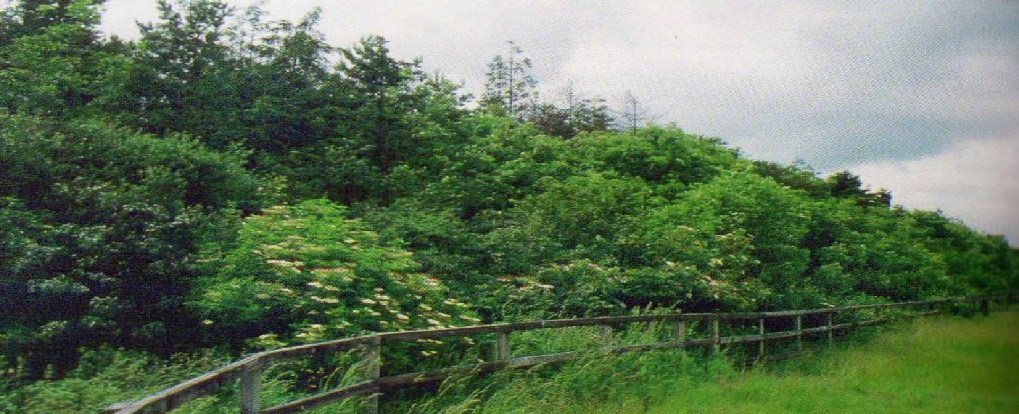
Optimal Shelterbelts (OSB®)
John Davis, a forester, tree nurseryman and woodland owner has been promoting a particular design of shelterbelt, the ‘Optimal Shelterbelt’, based on research that was commissioned in conjunction with Oxford University 25 years ago. These shelterbelts are 5m wide and densely planted at the equivalent of 6,500 trees and shrubs/ha and designed to achieve a sloping profile (see Figure 1) to minimise turbulence. The design principles of a shelterbelt and its influence on the wind is shown in Figure 2 and is built on traditional knowledge and tested principles of porosity, height and turbulence.
The OSB® design has the scope to provide productivity gains with the added benefit of minimal loss of agricultural land, and siting these shelterbelts by existing hedges can further increase their appeal, by utilising existing field layouts.
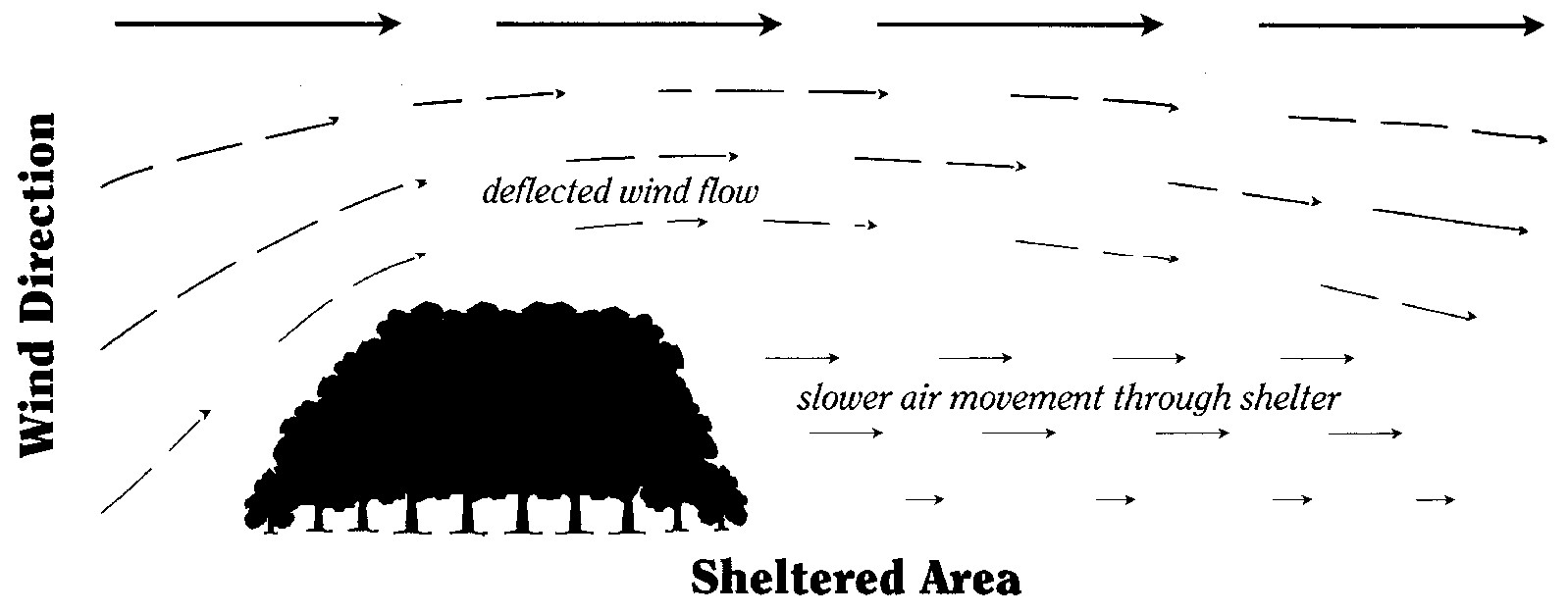
The Regulatory Position
Current Government funding through Countryside Stewardship funds hedgerow improvement up to 1.5m width and the current woodland grant scheme in England, the English Woodland Creation Offer, (EWCO), only funds shelterwoods that are a minimum of 10m width and 1 hectare in total. Prior to the introduction of the EWCO, the minimum width required was 20m so EWCO can be considered as a step in right direction.
To date, the funding for this OSB® demonstration project has relied on “blended finance”, which was generously provided by the Cotswold AONB, by the Great Western Community Forest, by the Environment Agency, and by Protect Earth, an environmental tree planting charity, by the Woodland Trust and the Dulverton Trust.
Benefits from Optimal Shelterbelts (OSB®)
Crop Productivity
It is obvious that a natural greenhouse effect, such as a designed shelterbelt will benefit crops within the sheltered area. Although there is a complex and dynamic relationship between shelter and crop responses, global literature reviews indicate improved yields with shelter (e.g., Nuberg, 1998).
All livestock, such as sheep, cattle and horses, can also benefit in terms of better welfare. A key component of sheep farming profitability is lamb mortality and ewe rejection, both of which can benefit from appropriate available shelter (Gregory 1995), and this is one reason why much lambing nowadays is preferred within indoor shelters – a costly alternative to in-field shelter.
For healthy beef cattle with a dry winter coat, their lower critical temperature (LCT) is around 0oC (depending on body condition) but for a wet animal it can rise to 15.5 oC with windchill further reducing effective temperatures. The rule of thumb for wet animals is that 2% more food is required to maintain body weight for every 1 oC below LCT, and so animals exposed to cold, wind and rain without shelter can require substantially more feed to maintain core body temperature. risking both poorer welfare and a resource inefficient system (Morgan et al 2011;Rusche & Walker, 2021).
Biodiversity
Modern farming represents varying degrees of monoculture as each rotation attempts to maximise annual crop production. This will require differing amounts of soil disturbance, chemicals, fertilizers, and pesticides, while the boundary hedgerows represent those areas of beneficial “non disturbance” of soils. Widening field boundaries to 5 metres and planting carefully selected tree species for both shelter and biodiversity purposes, supports and improves the provision of the habitats offered by the existing hedgerow network, such as it is. Wildlife corridors are becoming the theme of many national biodiversity strategies. Hedgerow shelterbelts can become one of the essential facilitators. There is also emerging advice that for hedgerows to optimise biodiversity, they need to be allowed to grow 10 to 20 metres into the field. The main focus of the OSB® initiative is on balancing productivity and environmental benefits with land removed from food production.
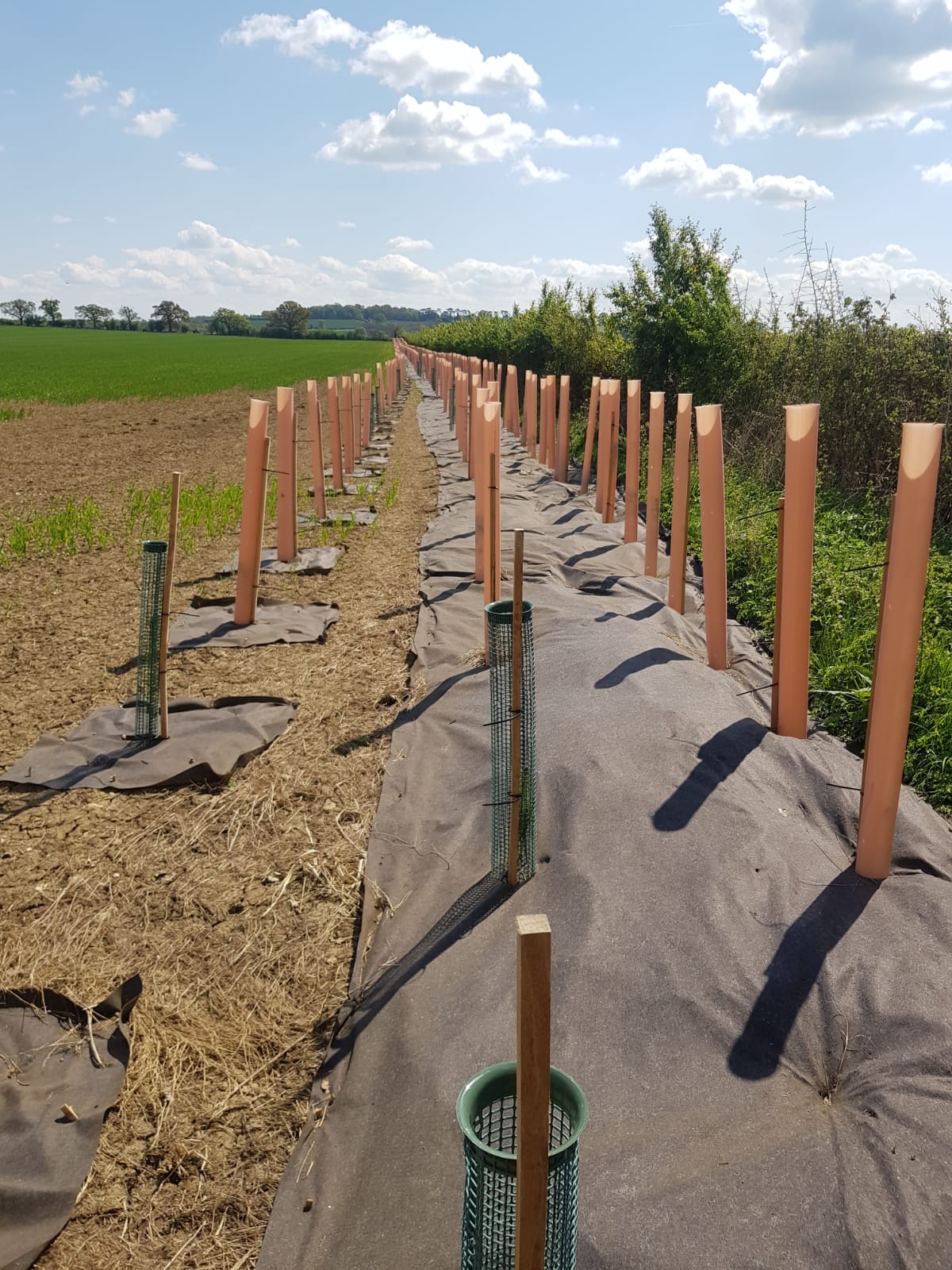
The Design of an OSB®
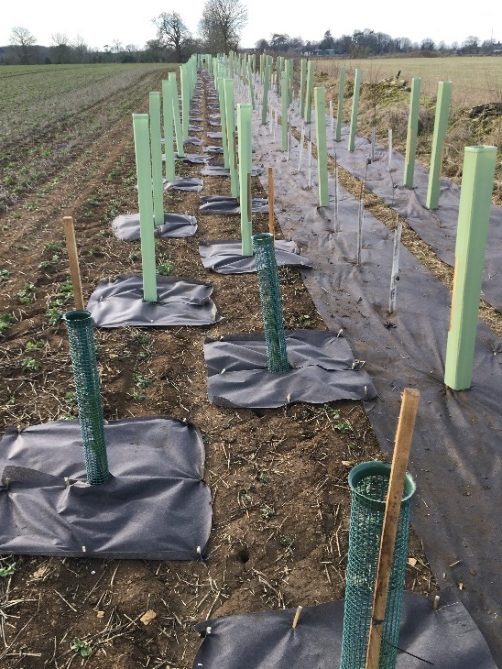
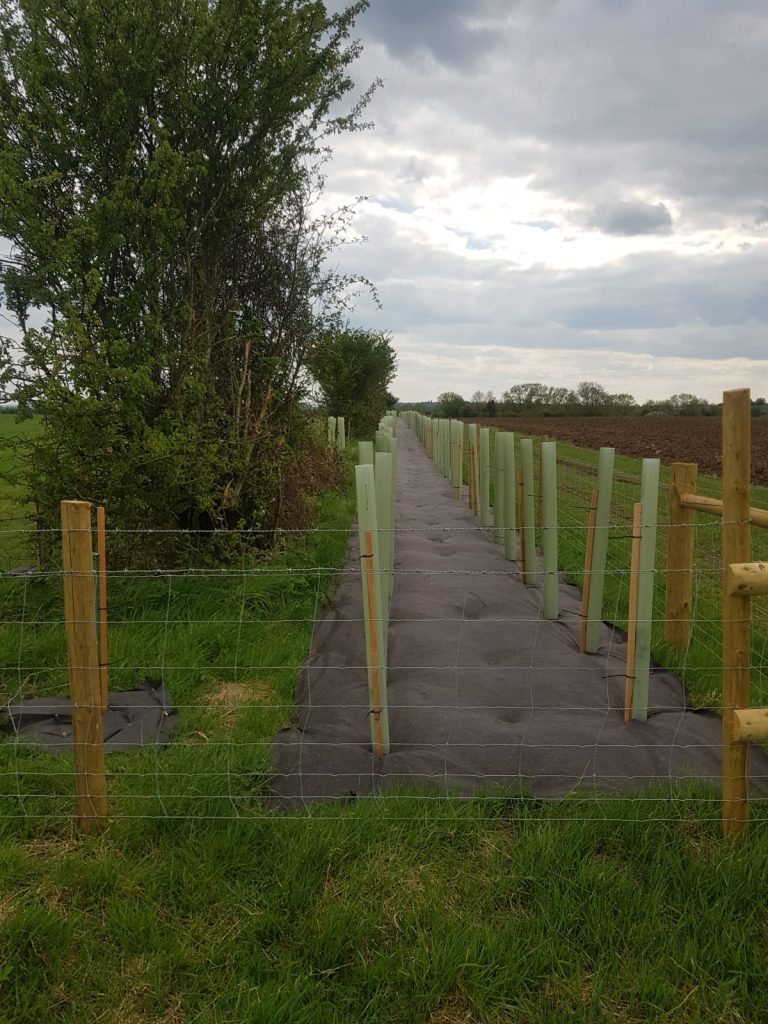 The OSBs® currently being tested are composed of 4 rows of trees at 3.25 trees per linear metre. Eighteen different species are used for each OSB® – 6 tall trees (Scots pine, grey alder, common alder, aspen, black poplar, hornbeam); 6 intermediate trees (field maple, silver birch, bird cherry, goat willow, rowan, crab apple ); 6 shrubs (hawthorn, buckthorn, alder buckthorn, hazel, spindleberry, guelder rose). These species were chosen for a number of reasons. First, all these species were well suited to the site conditions. Second, they were selected as they will support a lot of biodiversity and compatibility with local landscape, and the preferences and requirements of the Cotswold AONB, the local regulator. Third, the species were chosen for their leaf distribution and density to achieve the desired porosity.
The OSBs® currently being tested are composed of 4 rows of trees at 3.25 trees per linear metre. Eighteen different species are used for each OSB® – 6 tall trees (Scots pine, grey alder, common alder, aspen, black poplar, hornbeam); 6 intermediate trees (field maple, silver birch, bird cherry, goat willow, rowan, crab apple ); 6 shrubs (hawthorn, buckthorn, alder buckthorn, hazel, spindleberry, guelder rose). These species were chosen for a number of reasons. First, all these species were well suited to the site conditions. Second, they were selected as they will support a lot of biodiversity and compatibility with local landscape, and the preferences and requirements of the Cotswold AONB, the local regulator. Third, the species were chosen for their leaf distribution and density to achieve the desired porosity.
The trees are planted in groups of three trees between 2 rows and 5 shrubs of a species between 2 rows, consistent to provide visual uniformity, optimum porosity, and to mimic the clustering of species in naturally occurring mosaics. The outer 2 rows facing the prevailing wind are composed of shrub and intermediate species and are spaced at 1m apart and 1.5m between the rows. The remaining 2 rows are the tall trees and are spaced at 2m and 1.5m between the rows. The species and planting layout are the same on all the OSBs® supporting performance analysis across sites. The design principle of the OSB® is shown in figure 4 below. This spatial design is not novel and was taught for many years by the Oxford Forestry Institute from many years of practical experience developing shelterbelts across the Commonwealth, particularly in India and Africa.
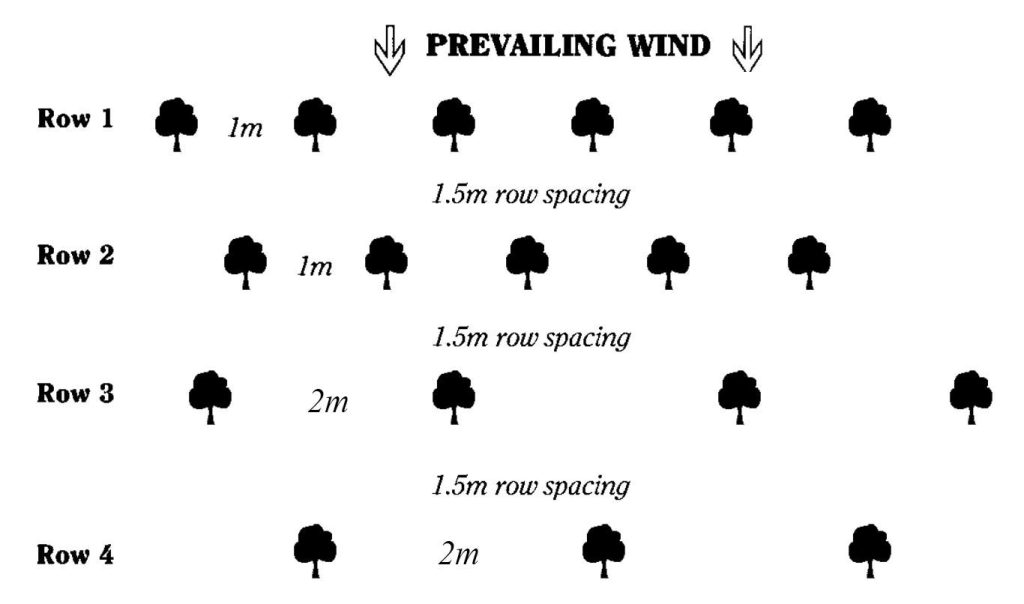
Net Zero Government Targets
Opportunities exist for any farm to benefit from incorporating an OSB® delivering benefits to farming productivity and to natural ecosystems. By way of hypothetical illustration, if all 106,000 farm holdings in England planted one OSB® (an average OSB® is 500 m2), this would lead to 176 million more trees being planted. This represents one third of the Government’s woodland creation target for England and would offer a reasonable and achievable method of repopulating the landscape, in a popular way for the landowning community.
Next Steps
We would welcome landowners and farmers becoming more involved. Shelterbelts could become a mainstream consideration for woodland creation offering increased farming productivity and biodiversity. Until now, grant funding for all types of shelterbelts below 10m width falls outside grant funding rules.
Further questions can be sent to us here at Tree Shop. Your knowledge and contacts can help the project forwards, and with your consent, may be used in discussions with policymakers.
Further Reading
- Case Study 1 – Nicholas Bumford – Guiting Manor Farms
- Case Study 2 – Becci Berry – Brimstone Farm
- Case Study 3 – Ian Wilkinson – Farm Edd
- Case Study 4 – Andrew Woof – Weston Farm
- Case Study 5 – Jeremey Isles – Leafield Farm
- Case Study 6 – Clive Handy – Lower Hampen Farm
- Case Study 7 – Andrew Bullock – Aston Farm
- Case Study 8 – John Phillips – Far Hill Farm
- Case Study 9 – Nick Phillips – Kilkenny Farm
- Case Study 10 – David Sanderson – Stainswick Farm
- Case Study 11 – Tim Peachey – Donkeywell Farm
- A vision for the adoption of OSB® ‘Optimal Shelterbelts’ – Quarterly Journal of Forestry article
Our Service now Available
TreeShop can offer a full establishment, maintenance, and financial advisory service. Various forms of blended finance may be on offer in your area, and we may be able offer now charitable funded support of £3 per tree this season. If you would like to consider creating a shelterbelt, please book a 30 minute free phone call with our experts John Davis or Bryan Goldstone. We can suggest options during this call, followed by an advisory visit, which will be chargeable.
- John Davis – 01452 832 100 – [email protected]
- Optimal Shelterbelts/Windbreaks (OSB) – Tree Nursery UK (tree-shop.co.uk)


